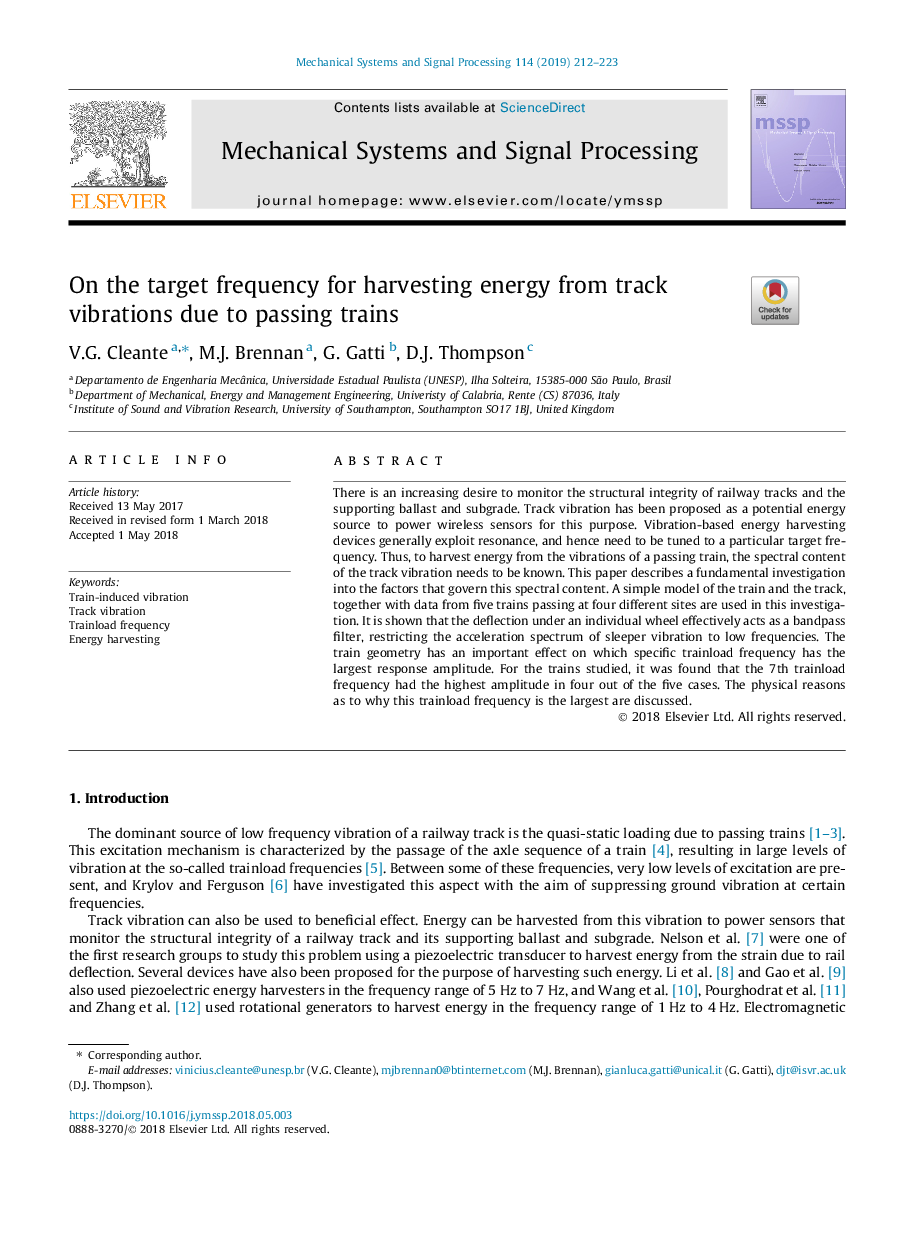| Article ID | Journal | Published Year | Pages | File Type |
|---|---|---|---|---|
| 6953616 | Mechanical Systems and Signal Processing | 2019 | 12 Pages |
Abstract
There is an increasing desire to monitor the structural integrity of railway tracks and the supporting ballast and subgrade. Track vibration has been proposed as a potential energy source to power wireless sensors for this purpose. Vibration-based energy harvesting devices generally exploit resonance, and hence need to be tuned to a particular target frequency. Thus, to harvest energy from the vibrations of a passing train, the spectral content of the track vibration needs to be known. This paper describes a fundamental investigation into the factors that govern this spectral content. A simple model of the train and the track, together with data from five trains passing at four different sites are used in this investigation. It is shown that the deflection under an individual wheel effectively acts as a bandpass filter, restricting the acceleration spectrum of sleeper vibration to low frequencies. The train geometry has an important effect on which specific trainload frequency has the largest response amplitude. For the trains studied, it was found that the 7th trainload frequency had the highest amplitude in four out of the five cases. The physical reasons as to why this trainload frequency is the largest are discussed.
Related Topics
Physical Sciences and Engineering
Computer Science
Signal Processing
Authors
V.G. Cleante, M.J. Brennan, G. Gatti, D.J. Thompson,
